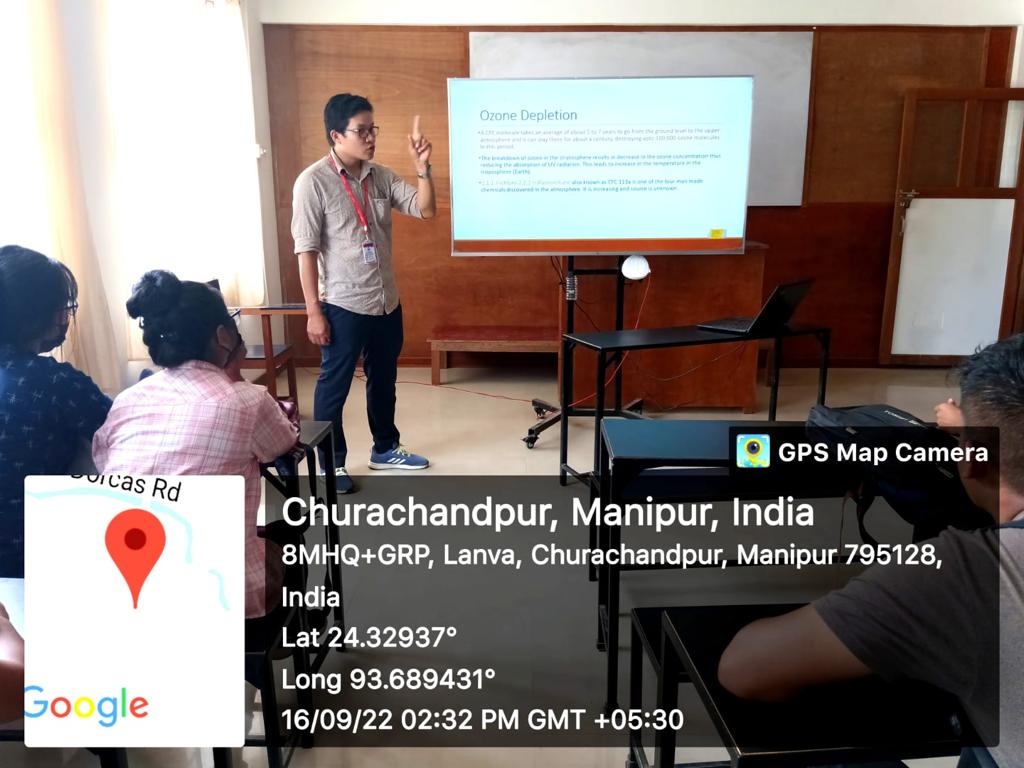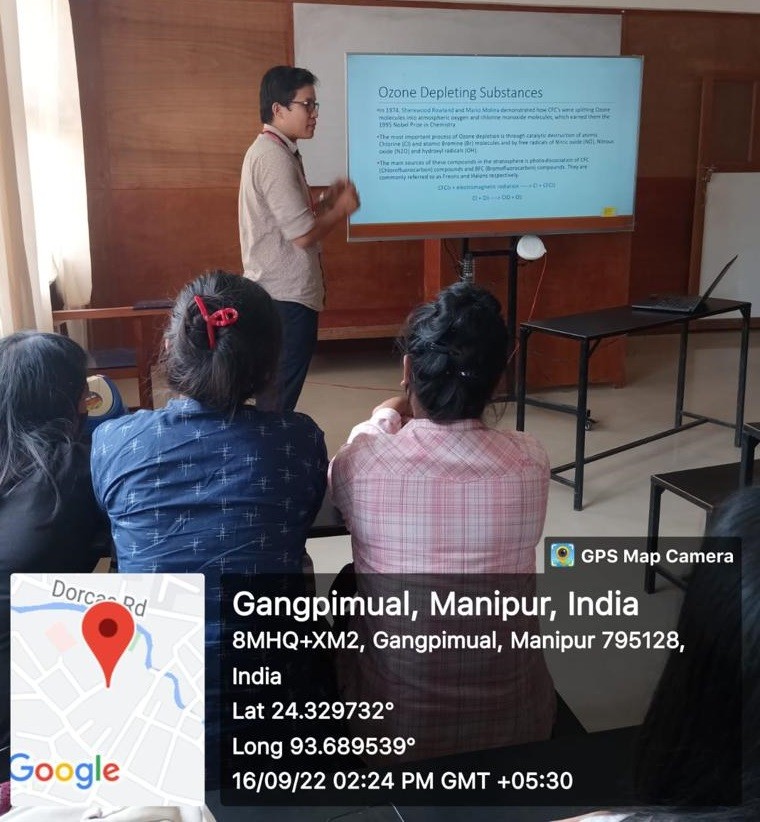
Every year, the 16th of September is the International Day for preserving the Ozone layer (World Ozone Day).
Lamka, September 16, 2022: On world Ozone Day, the Department of Geography, Rayburn College, organized a seminar on the topic "Saving the Ozone Layer."
The relevance of the ozone layer and the history of the Montreal Protocol are stressed by the resource person, Zammitlian Thangsing. He continued by saying that 99% of the ozone-depleting compounds found in refrigerators, air conditioners, and many other products had been phased out due to the Montreal Protocol. However, the ozone hole continues to appear every year in the spring in the Southern Hemisphere, seemingly on cue (August-October).
 The resource person went on about the depletion of the Ozone Layer, questioning the solution to an environmental problem. He demonstrated that the area and rate of the ozone layer's recovery had remained the same. According to a UN research titled "Scientific Assessment of Ozone Depletion: 2018," the ozone layer is only regenerating at a rate of 1-3% per decade. Ozone-depleting substances also have long lifetimes that make them persist in the atmosphere for decades to centuries. Skin cancer, cataracts, and other harmful effects will continue, and the people exposed to ultraviolet radiation a long time back will still suffer the consequences even after the ozone layer is healed to a great extent.
The resource person went on about the depletion of the Ozone Layer, questioning the solution to an environmental problem. He demonstrated that the area and rate of the ozone layer's recovery had remained the same. According to a UN research titled "Scientific Assessment of Ozone Depletion: 2018," the ozone layer is only regenerating at a rate of 1-3% per decade. Ozone-depleting substances also have long lifetimes that make them persist in the atmosphere for decades to centuries. Skin cancer, cataracts, and other harmful effects will continue, and the people exposed to ultraviolet radiation a long time back will still suffer the consequences even after the ozone layer is healed to a great extent.
Though the Montreal Protocol has replaced CFCs with HFCs, using HFCs as an alternative will contribute to another problem, i.e., global warming.
The resource person stressed that any environmental intervention must be adhered to continuously to prevent a recurrence of the issue. One of the most potent ozone-depleting chemicals, CFC-11, was recently found to be produced in "rogue" quantities, which serves as a sharp reminder of the necessity for vigilance and ongoing scientific research. He further said that transferring money and technology from industrialized to emerging nations is necessary. Research and development in refrigeration technologies should be pursued to identify a successor, such as a non-ozone-depleting material with a low potential for global warming. He puts forward to saving the ozone layer by making a call that it is past time for environmental concerns like ozone depletion to be discussed in public; in this way, civil society may aid in increasing public awareness. Addressing climate change and global warming must be combined with preserving Ozone to meet SDG 13, which calls for taking urgent action to combat it and its effects. As a result, Ozone Day can no longer be limited to Ozone, he concluded.